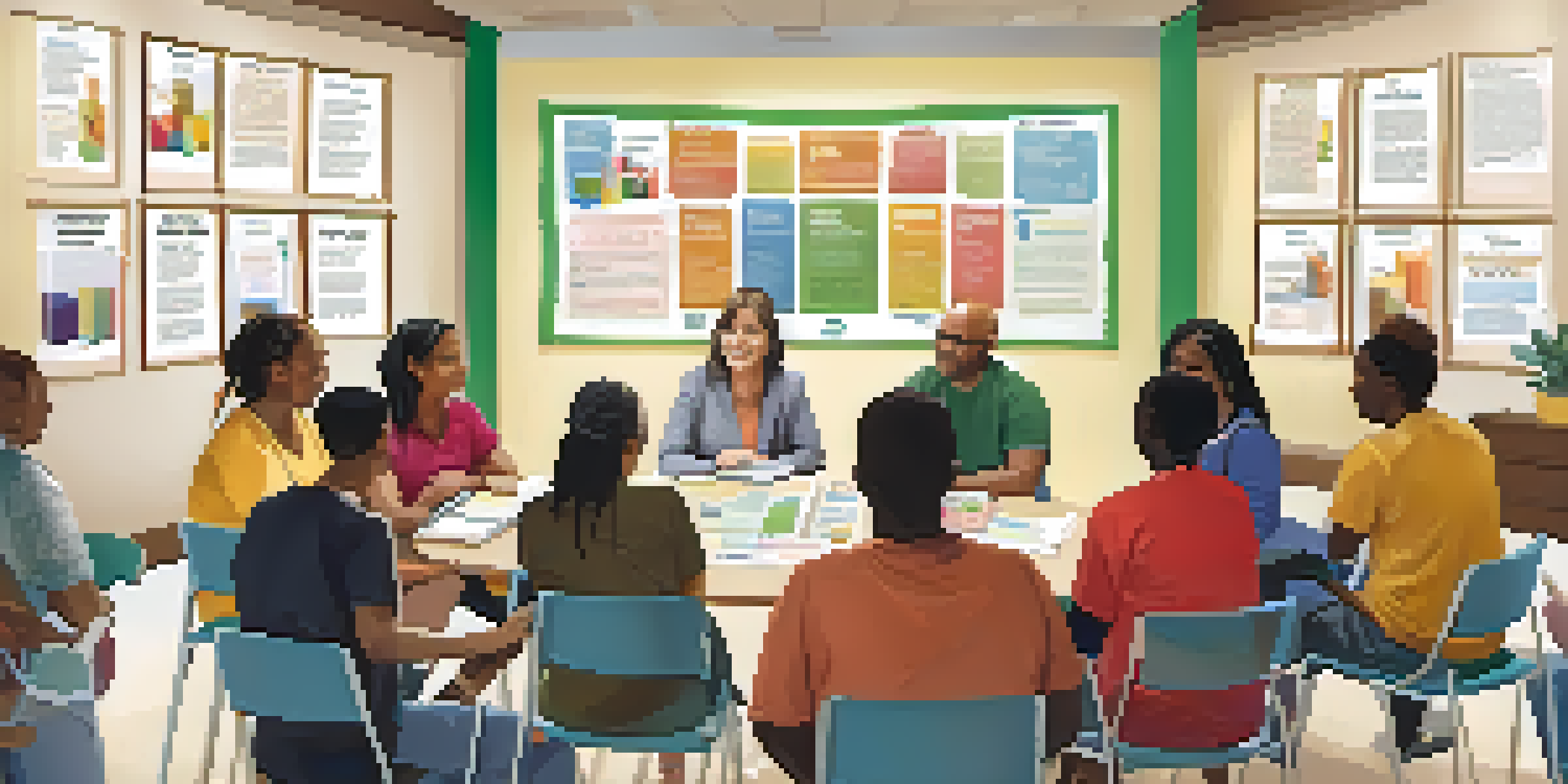Understanding the Social Determinants of Health Literacy

What Are Social Determinants of Health Literacy?
Social determinants of health literacy refer to the conditions in which people are born, grow, live, work, and age. These factors encompass a wide range of issues, including socioeconomic status, education, and access to healthcare. Understanding these determinants is essential because they significantly influence an individual’s ability to acquire, process, and understand health information.
Health literacy is a vital part of a person’s ability to navigate the healthcare system and make informed decisions about their health.
For instance, someone with higher education levels may find it easier to navigate health information compared to someone with limited schooling. Additionally, a supportive community can enhance health literacy by providing resources and social networks. Ultimately, these elements work together to shape how effectively individuals can engage with their health.
Recognizing the impact of social determinants can lead to more effective public health strategies. By addressing these underlying factors, we can foster environments that enhance health literacy and, in turn, improve health outcomes for everyone.
The Role of Education in Health Literacy
Education plays a pivotal role in determining health literacy levels. Individuals with higher educational backgrounds often develop better critical thinking and comprehension skills, which are crucial when interpreting medical information. For example, someone who has completed higher education is more likely to understand complex medical jargon than someone with less formal education.

However, it's not just the level of education that matters, but also the quality of that education. Schools that prioritize health education can equip students with the necessary skills to navigate health-related information effectively. This early exposure can have lasting effects on health literacy throughout a person's life.
Social Factors Shape Health Literacy
Social determinants like education, socioeconomic status, and community support significantly influence an individual's ability to understand and manage health information.
Moreover, community education programs can supplement formal education, helping individuals of all ages improve their understanding of health information. These initiatives can bridge gaps in knowledge and empower people to take charge of their health decisions.
Socioeconomic Status and Its Impact
Socioeconomic status (SES) significantly influences health literacy. Individuals from lower SES backgrounds may face barriers such as limited access to education and healthcare resources. This can lead to challenges in understanding health information, ultimately affecting their health outcomes.
The ability to obtain, process, and understand basic health information and services needed to make appropriate health decisions is essential for everyone.
For example, someone living in a low-income area might not have reliable access to internet resources, making it difficult to research health issues. Additionally, financial constraints can limit their ability to seek professional medical advice, further complicating their health literacy.
Addressing these disparities is crucial for fostering equitable health literacy. By providing resources tailored to low-SES communities, we can help bridge the gap and ensure that everyone has the opportunity to understand and manage their health effectively.
Cultural Influences on Health Literacy
Culture significantly shapes how individuals perceive and understand health information. Different cultures have unique beliefs, values, and practices that can influence health literacy. For instance, some cultures may prioritize traditional healing practices over conventional medicine, affecting how people approach health care.
Moreover, language barriers can further complicate health literacy. Individuals who speak a different language may struggle to understand health materials that are not available in their native tongue. This often leads to miscommunication and misunderstanding of health information.
Education Enhances Health Understanding
Higher quality education and community programs are essential in equipping individuals with the skills needed to navigate health information effectively.
To promote better health literacy across cultures, it's essential to provide culturally relevant resources. By recognizing and respecting cultural differences, we can create more inclusive health communication strategies that resonate with diverse populations.
Access to Healthcare Services
Access to healthcare services is a crucial social determinant of health literacy. When individuals can easily access medical care, they are more likely to receive timely information about their health. Conversely, those with limited access may miss vital health information, leading to a gap in understanding their medical conditions.
For example, individuals living in rural areas may have to travel long distances to see a healthcare provider, making regular check-ups challenging. This can result in a lack of consistent health information and support, hindering their ability to manage their health effectively.
Improving access to healthcare services, particularly in underserved areas, is essential. By ensuring that everyone has the ability to consult with healthcare professionals, we can help bridge the gap in health literacy and empower individuals to take control of their health.
The Internet and Health Literacy
The internet has transformed how we access health information, but it also presents challenges. While online resources can enhance health literacy by providing a wealth of information, they can also lead to misinformation. Not all sources are credible, and individuals may struggle to distinguish between reliable and unreliable health information.
For instance, a person might read conflicting information about a medical condition on different websites, leading to confusion. This highlights the importance of digital literacy as a component of health literacy—knowing how to evaluate sources is just as vital as understanding the information itself.
Access to Care Affects Health Knowledge
Easier access to healthcare services is crucial for receiving timely health information, which directly impacts health literacy and outcomes.
To promote effective use of online health resources, educational initiatives should focus on teaching individuals how to critically assess health information found online. This can empower them to make informed health decisions based on credible sources.
Community Support and Health Literacy
Community support plays a vital role in enhancing health literacy. When individuals have a strong support network, they are more likely to seek out health information and engage with health services. Community programs that encourage health literacy can create an environment where sharing knowledge is valued.
For example, support groups can provide a platform for individuals to discuss health issues and share experiences, fostering a collective understanding of health matters. These interactions can help demystify medical jargon and empower individuals to advocate for their health.

Moreover, local organizations can implement workshops and seminars aimed at improving health literacy within the community. By working together, communities can create a culture of health awareness, ultimately leading to better health outcomes for all.
Strategies to Improve Health Literacy
Improving health literacy requires a multifaceted approach. One effective strategy is simplifying health communication by using plain language and clear visuals. This makes information more accessible to individuals with varying education levels and backgrounds.
Additionally, training healthcare providers to communicate effectively with patients is crucial. They should be equipped with skills to explain complex medical concepts in simpler terms, ensuring that patients fully understand their health conditions and treatment options.
Finally, implementing community-based programs that focus on education and awareness can make a significant difference. By fostering an environment that prioritizes health literacy, we can empower individuals to take charge of their health and well-being.